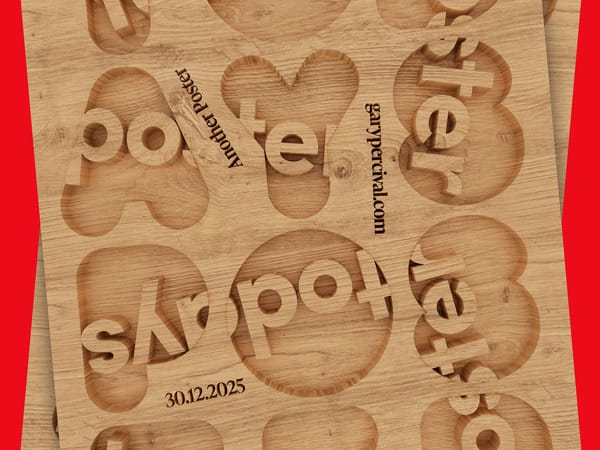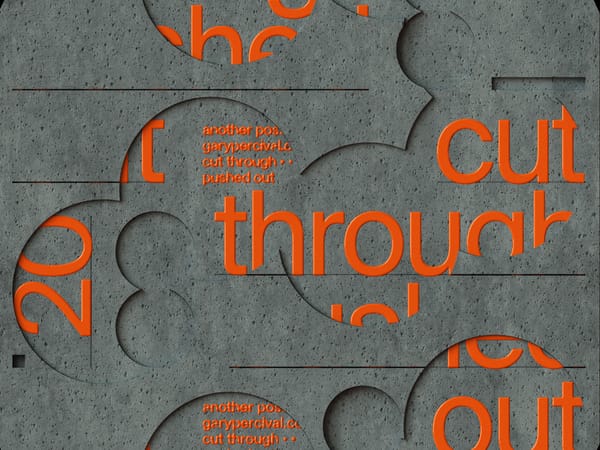Make Something. Learn Everything
“Reading keeps things theoretical. Making makes things personal.”

Every creative eventually realises that reading about a subject and doing it live are entirely different universes. You can consume books, watch tutorials, scroll through inspiration feeds, even take courses—but the real transformation comes the moment you commit to making something of your own.
The act of making forces you into the kind of learning that reading never can. You encounter problems no one predicted, gaps that theory glosses over, and opportunities that only appear when you’re knee-deep in the mess of creation.
If you really want to learn, don’t just study—teach, build, explain, share.
The lesson is simple: make something, learn everything.
Why the Teacher Learns the Most
Think back to school. Chances are, the person who walked out of each lesson with the deepest understanding wasn’t the star student in the front row. It was the teacher.
Teaching demands clarity. To explain an idea to someone else, you have to understand it from every angle: not only the clean, polished theory, but also the clumsy questions, the common mistakes, the misunderstandings.
That’s why the act of teaching—whether in a formal classroom, a blog post, or even an Instagram carousel—accelerates your learning more than passively listening ever could.
For creatives, “teaching” doesn’t have to mean lecturing at a whiteboard. It can mean:
- Writing about your process in a blog.
- Recording a short tutorial video.
- Documenting your design decisions on LinkedIn.
- Explaining your craft in a newsletter.
When you try to make your thinking visible to others, you discover just how much you know—and how much you still need to figure out.
Making Is Teaching Yourself
Here’s the catch: not everyone wants to teach. Some people don’t feel ready. Some think, “Who am I to explain this when I’m still learning?”
But making itself is a form of teaching.
- Designing a poster teaches you more about typography than reading ten type manuals.
- Building a product mockup teaches you more about UI than browsing a hundred Dribbble shots.
- Starting a freelance side project teaches you more about pricing, negotiation, and deadlines than any business book.
When you make something, you enter into a dialogue with reality. And reality is the strictest teacher you’ll ever have.
Reading keeps things theoretical. Making makes things personal.
The Illusion of Knowing
It’s dangerously easy to confuse “familiarity” with “mastery.”
Scrolling through Behance, you nod along: “I get it. Minimalist grid. Smart use of contrast.” Reading a book on creativity, you underline a passage: “Yes, that’s so true.” Watching a tutorial, you think: “That seems straightforward.”
But familiarity isn’t the same as ability.
The illusion disappears the second you try to recreate it yourself. You suddenly realise that what looked obvious is actually nuanced. What felt easy in theory is awkward in practice.
- You know the rules of typography—until you try to pair two fonts and they clash.
- You understand the concept of brand storytelling—until a client asks you to write theirs, and your mind goes blank.
- You’ve read about colour grading—until you have to grade your own photos and can’t quite capture the mood you imagined.
That’s the gap between knowing and doing. And the only bridge across it is making.
Learning in Public
One of the most effective ways to learn deeply is to make something and then share it.
Not because you’re chasing likes, but because public work changes your mindset. Suddenly, there’s accountability. Suddenly, you care about whether the idea is clear enough, strong enough, resilient enough to stand on its own.
For freelancers, this practice does double duty:
- It accelerates your learning.
- It builds your portfolio and reputation.
Every Instagram post, every blog entry, every personal project teaches you twice: once in the making, and once again in the sharing.
Yes, it feels exposing. Yes, it invites critique. But the creative who makes and shares will always outpace the one who consumes and hides.
Constraints Teach Faster Than Freedom
There’s another twist here. Infinite choice doesn’t teach much. Constraints do.
Think of it like learning a language. Reading vocabulary lists makes you feel smart, but having to order a meal in another country makes you fluent.
For creatives:
- A client brief teaches you more about compromise than an open-ended passion project.
- A limited budget teaches you more about creativity than endless resources.
- A deadline teaches you more about decision-making than unlimited time.
Constraints force you to prioritise, simplify, and adapt. They sharpen your instincts and reveal your habits. They reveal who you are when the path narrows.
That’s why “make something” isn’t about endless doodling. It’s about making under real conditions—conditions that mimic the world you want to operate in.
The Freelancer’s Advantage
Freelancers and independent creatives have an edge here. Unlike employees who might be boxed into repetitive roles, you can design your own curriculum through projects.
- Want to learn 3D? Promise yourself you’ll release one 3D poster a week.
- Curious about editorial design? Redesign three existing magazines in your free time.
- Unsure how to price? Offer your services to a friend’s business and track the results.
Every project becomes a self-assigned course. Every deliverable is both a piece of work and a lesson learned.
The beauty of freelancing is that you don’t need permission. You just need a project and the willingness to finish it.
Mistakes Teach Best
Here’s the hard truth: making something guarantees mistakes. You’ll overpromise, miscalculate, and crash into technical walls.
And that’s exactly why it works.
Mistakes are expensive in theory but priceless in practice. They expose blind spots, force humility, and highlight where you need to grow.
For creatives, the embarrassment of a failed poster, a clunky layout, or a rejected concept is actually tuition. You’re paying in time and ego instead of money—and the payoff is experience you can’t fake.
The Invisible Curriculum
Think of making as an invisible curriculum. Each project is a class you’ve enrolled in, except you don’t need to wait for someone else to set the syllabus.
- Build a type poster series → course in typography.
- Design a fictional brand identity → course in branding.
- Run a personal photography challenge → course in composition.
- Start a small e-commerce experiment → course in business.
The difference is that you come out not with a certificate, but with a body of work and the real-world learning that sticks.
Stop Waiting. Start Making
If you’re stuck in the cycle of consuming—saving tutorials, buying books, bookmarking articles—it’s worth asking: When will I make something of my own?
Because the truth is, you don’t learn by waiting until you feel ready. You learn by leaping in before you’re prepared.
That messy poster, that half-baked draft, that clunky prototype—it’s all part of the tuition. The sooner you pay it, the faster you learn.
So if you want to know more, understand more, grow more—stop reading for a moment and make something.
Because when you make something, you don’t just add to your portfolio—you expand your entire capacity to create.



